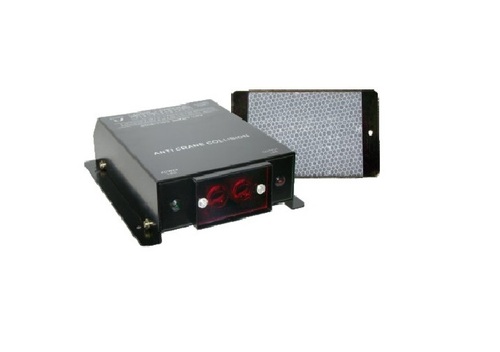
Anti Collision Device
3600 INR/Piece
Product Details:
- Usage Industrial
- Material Stainless Steel
- Color Black
- Warranty 1 Year
- Frequency 50 Hertz (HZ)
- Product Type Anti Collision Device
- Application Security
- Click to view more
X
Anti Collision Device Price And Quantity
- 1 Piece
- 3600 INR/Piece
Anti Collision Device Product Specifications
- Industrial
- Black
- 1 Year
- Stainless Steel
- Electric
- Security
- 50 Hertz (HZ)
- Anti Collision Device
Anti Collision Device Trade Information
- Cheque
- 50 Piece Per Week
- 4 Days
- Sample costs shipping and taxes has to be paid by the buyer
- Asia, Australia, Central America, North America, South America, Eastern Europe, Western Europe, Middle East, Africa
- All India
- AN ISO 9001 : 2008 CERTIFIED COMPANY
Product Description
The Anti Collision Device is a state-of-the-art sensing device designed for industrial applications, particularly EOT cranes and security systems. Crafted from durable stainless steel, this device ensures reliability in demanding environments. Operating on an electric power supply with an input and output voltage of 220 and 110 respectively, it is equipped to handle a frequency of 50 Hertz for consistent performance. Featuring dimensions of 220*160*65 mm and a weight of 1250 grams, its compact and lightweight, making installation more convenient. Its rated voltage of 10 amperes ensures robust operation, while the vibrant yellow and black color scheme enhances visibility. The Anti Collision Device promises durability and performance with a 1-year warranty, ensuring peace of mind. Ideal for industries seeking precision sensing solutions, this device brings an added layer of safety and efficiency to operations.
FAQs of Anti Collision Device:
Q: What is the purpose of the Anti Collision Device?
A: The Anti Collision Device is designed for sensing applications, primarily enhancing safety and efficiency in industrial operations such as EOT cranes.Q: What are the dimensions of this device?
A: The device measures 220 mm in length, 160 mm in width, and 65 mm in height.Q: What material is the device made of?
A: The device is crafted from high-quality stainless steel.Q: What is the warranty period for this device?
A: The device comes with a 1-year warranty.Q: What is its rated voltage and frequency?
A: The device operates at a rated voltage of 10 amperes and a frequency of 50 Hertz.Tell us about your requirement

Price:
Quantity
Select Unit
- 50
- 100
- 200
- 250
- 500
- 1000+
Additional detail
Mobile number
Email
 08045801632
08045801632
 English
English Spanish
Spanish French
French German
German Italian
Italian Chinese (Simplified)
Chinese (Simplified) Japanese
Japanese Korean
Korean Arabic
Arabic Portuguese
Portuguese


 Send Inquiry
Send Inquiry Send SMS
Send SMS
